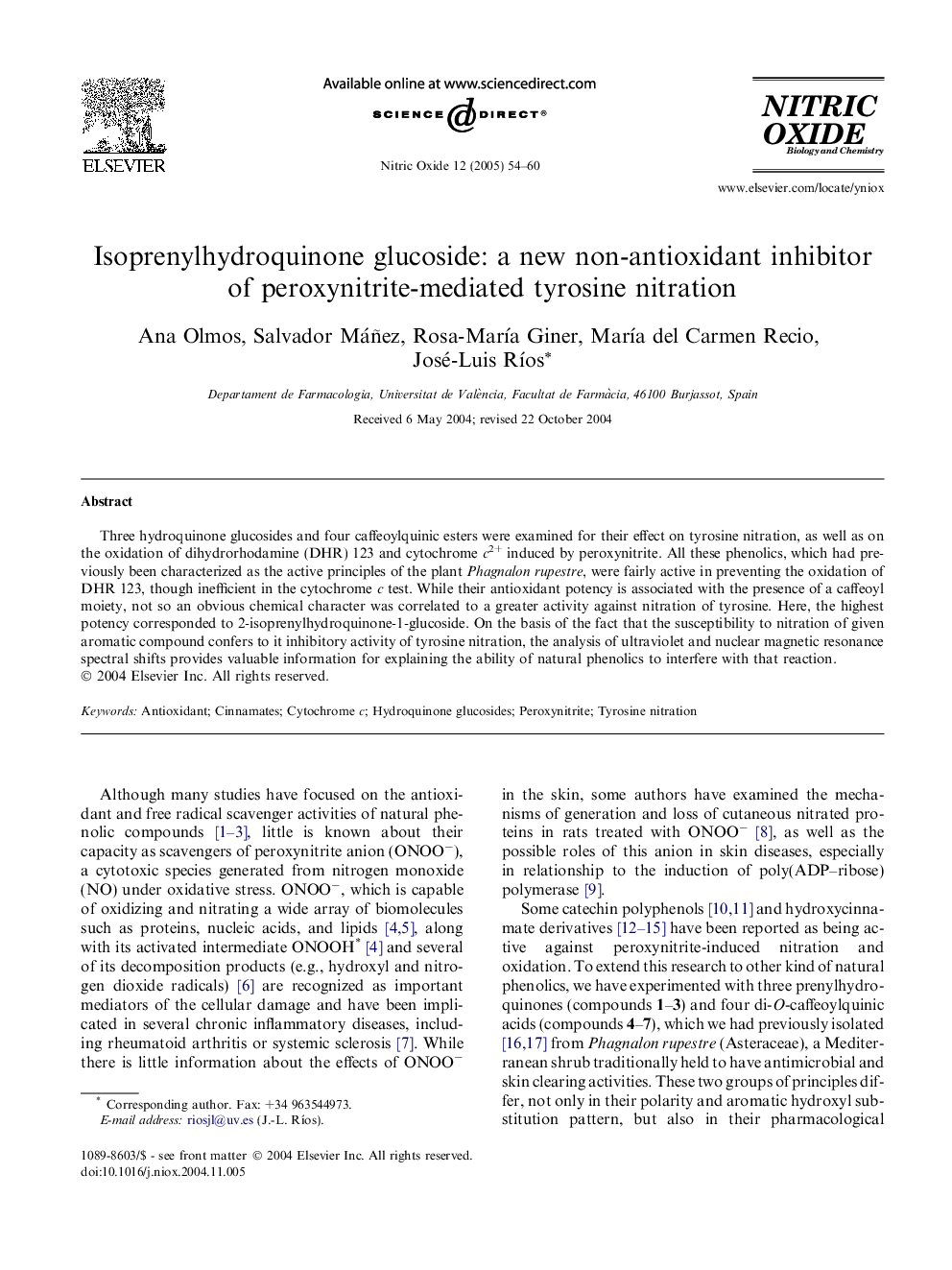| Article ID | Journal | Published Year | Pages | File Type |
|---|---|---|---|---|
| 10835420 | Nitric Oxide | 2005 | 7 Pages |
Abstract
Three hydroquinone glucosides and four caffeoylquinic esters were examined for their effect on tyrosine nitration, as well as on the oxidation of dihydrorhodamine (DHR) 123 and cytochrome c2+ induced by peroxynitrite. All these phenolics, which had previously been characterized as the active principles of the plant Phagnalon rupestre, were fairly active in preventing the oxidation of DHR 123, though inefficient in the cytochrome c test. While their antioxidant potency is associated with the presence of a caffeoyl moiety, not so an obvious chemical character was correlated to a greater activity against nitration of tyrosine. Here, the highest potency corresponded to 2-isoprenylhydroquinone-1-glucoside. On the basis of the fact that the susceptibility to nitration of given aromatic compound confers to it inhibitory activity of tyrosine nitration, the analysis of ultraviolet and nuclear magnetic resonance spectral shifts provides valuable information for explaining the ability of natural phenolics to interfere with that reaction.
Related Topics
Life Sciences
Biochemistry, Genetics and Molecular Biology
Biochemistry
Authors
Ana Olmos, Salvador Máñez, Rosa-MarÃa Giner, MarÃa del Carmen Recio, José-Luis RÃos,
